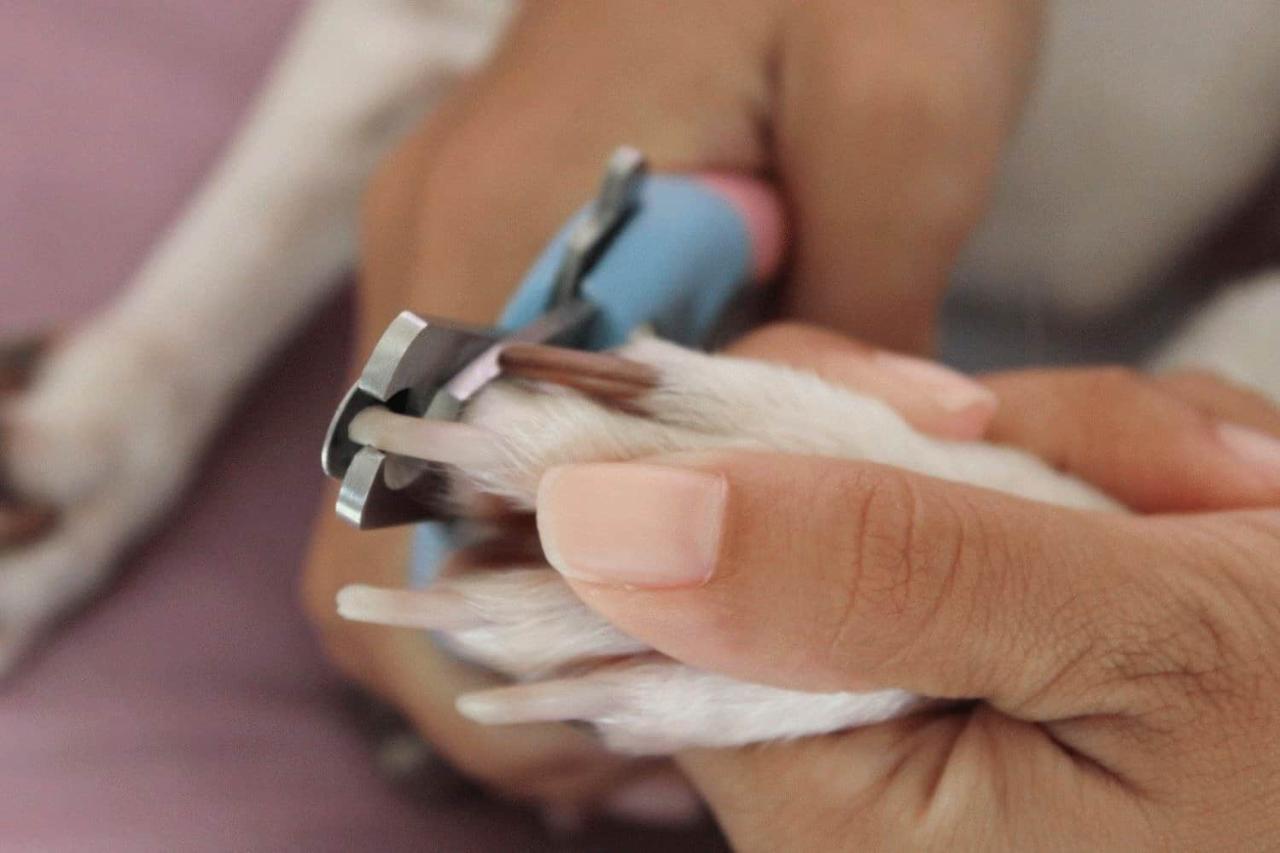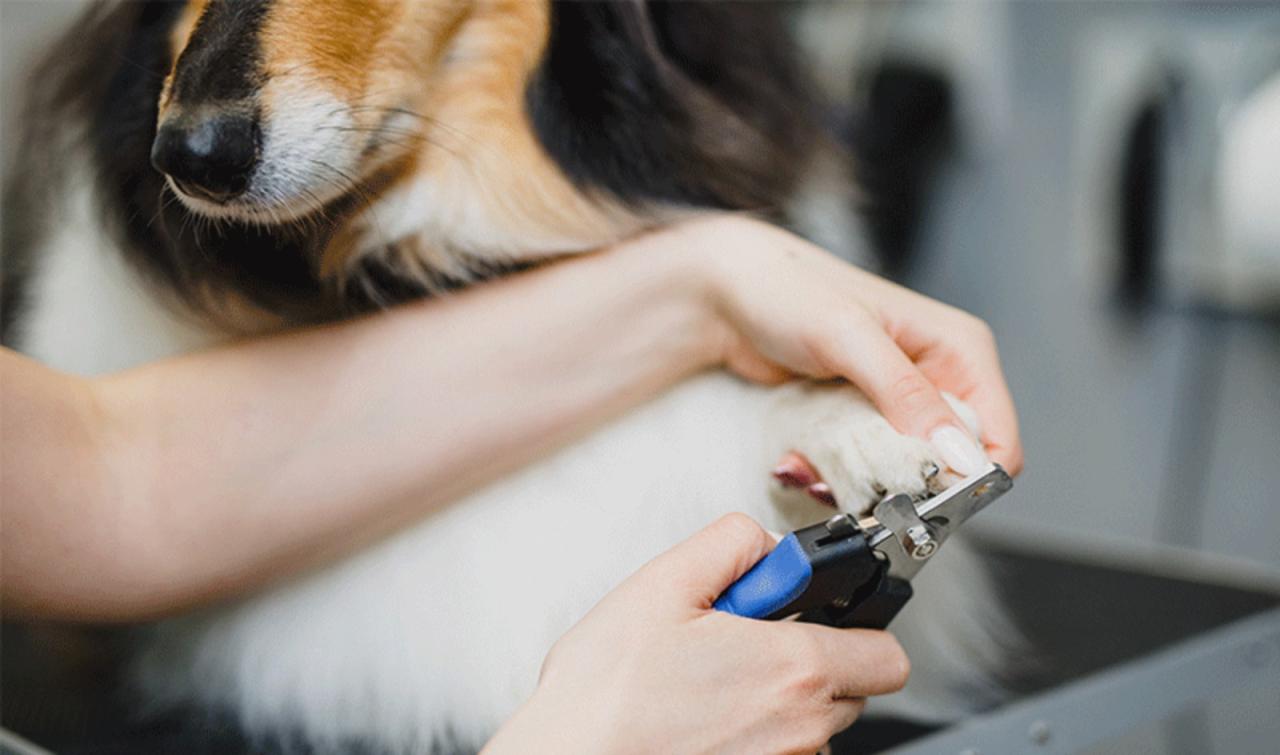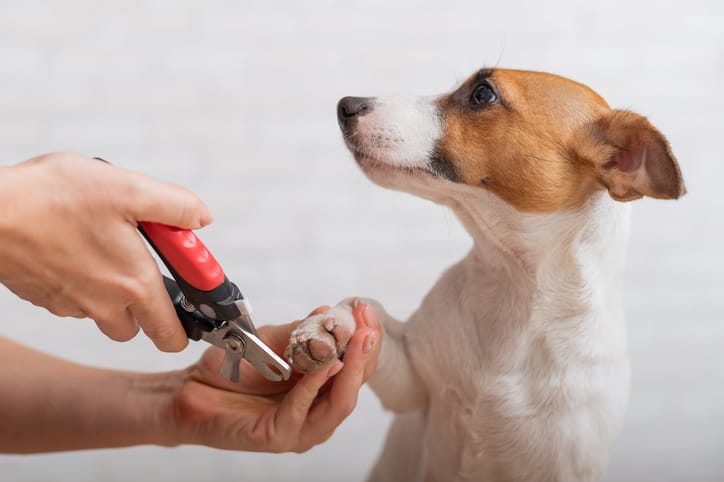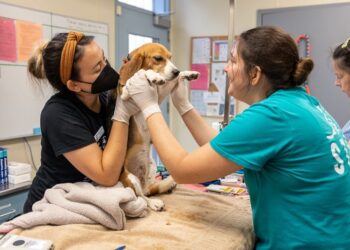Nail trimming, often perceived by pet owners as an intimidating chore or a wrestling match, is actually a fundamental component of preventative health care that profoundly impacts your dog or cat’s mobility, comfort, and long-term joint health.
Overgrown nails are not just an annoyance that ruins hardwood floors; they are a direct cause of significant pain, forcing a pet’s toes to spread unnaturally and placing unnatural pressure on the paw structure, which can lead to lameness, arthritis, and permanent deformation over time.
When nails become too long, they can easily catch on carpets or furniture, resulting in painful breaks that expose the sensitive quick, making the pet fearful of future handling.
Mastering the art of the trim—which relies entirely on patience, positive reinforcement, and knowing where that elusive quick begins—transforms this necessity from a dreaded struggle into a routine, low-stress bonding activity that ensures your furry companion remains physically sound and happily mobile for their entire life.
Why Nail Trimming Is Essential

Understanding the profound negative impact of long nails provides the motivation needed to make trimming a priority.
A. Preventing Pain and Joint Issues
- A. Long nails hit the ground first when your pet stands, pushing the toes upward and backward into an unnatural position.
- B. This constant pressure on the toe joints stresses the ligaments and tendons in the foot, ankle, and leg over time.
- C. The unnatural foot placement changes the pet’s entire gait, leading to chronic pain and contributing to arthritis, especially in senior animals.
- D. Long nails reduce a pet’s traction on smooth surfaces, causing anxiety and increasing the risk of falls and injury.
B. Maintaining the Quick and Claw Structure
- A. The quick is the internal living tissue within the nail, containing nerves and blood vessels, and is extremely sensitive.
- B. If nails are not trimmed regularly, the quick grows longer with the nail, making it more likely to be hit during the next trim.
- C. Regular, short trims encourage the quick to naturally recede, allowing you to shorten the nail safely over time.
- D. Dewclaws, located higher on the leg, never touch the ground to wear down and will eventually curl around to embed painfully into the pet’s skin if ignored.
C. Minimizing Household Damage
- A. Sharp, long claws can easily scratch wood floors, tear up carpets, and snag on furniture.
- B. Keeping a cat’s nails trimmed significantly reduces the damage done when they scratch or knead.
- C. Trimmed nails make playtime and cuddles safer and more comfortable for human family members.
Tools, Techniques, and The Quick
Choosing the right equipment and learning how to safely locate the quick are the two most crucial steps for home trimming success.
A. Selecting the Right Tool
- A. Scissor Clippers (like the Millers Forge type) have curved blades and work like strong scissors, excellent for most medium-to-large dogs and thick nails.
- B. Guillotine Clippers have a stationary ring and a slicing blade and are often preferred for small-to-medium-sized dogs with thinner nails.
- C. Electric Nail Grinders (or rotary tools) file the nail down gently and quickly, eliminating the risk of crushing the nail and allowing for a smoother finish.
- D. Grinders are often less intimidating for pets who are fearful of the sudden “snip” sound of clippers, but the vibration and noise require separate desensitization.
- E. Always ensure your clippers are sharp to achieve a clean cut and prevent crushing or splintering the nail, which is painful.
B. Locating the Quick
- A. Clear or White Nails: The quick is easily visible as the distinct pink line that runs down the center of the nail, and you should cut just a tiny bit past the pink area.
- B. Dark or Black Nails: Locating the quick is much more challenging, requiring you to trim in very small, thin increments.
- C. The Inspection Method: After each tiny slice, examine the cross-section of the nail; you are looking for a small, chalky white or gray ring in the center.
- D. The Warning Sign: Stop immediately when you see a tiny black dot in the center of the white ring; this dark spot is the end of the quick, and cutting further will cause bleeding.
- E. It is always safer to take off too little nail than to risk cutting into the quick.
C. Trimming Technique
- A. Choose a time when your pet is relaxed, such as after a meal or a quiet cuddle session.
- B. Gently but firmly hold the paw, placing your thumb on the paw pad and your forefinger on the top of the toe to extend the nail slightly.
- C. Use a quick, decisive motion to snip the tip of the nail, cutting straight across or at a slight 45-degree angle.
- D. For cats, apply gentle pressure to the paw pad to fully extend the retractable claw before trimming only the sharp, clear tip.
- E. Never forget to trim the dewclaws, which are located further up the leg and do not wear down naturally.
The Fear-Free Approach—Positive Conditioning

Nail trimming fear is almost always learned; positive reinforcement is necessary to rewire the pet’s negative association.
A. Desensitization and Counter-Conditioning
- A. Introduction to Tools: Leave the clippers or grinder on the floor for a few days, rewarding the pet simply for sniffing or ignoring the tool.
- B. Sound Association: For grinders, turn the tool on for a second without touching the pet and immediately give a high-value treat, repeating until the sound predicts the treat.
- C. Touch Association: Gently touch the tool to the pet’s feet, then immediately reward; repeat this for every single toe, ensuring the experience is overwhelmingly positive.
- D. The Final Step: Start by only trimming one nail and immediately throwing a “treat party” afterward, gradually increasing the number of nails trimmed over several sessions or days.
- E. If your pet pulls their paw away, stop the interaction, remain calm, and return to an easier step (like just paw holding) before trying to trim again.
B. Handling Techniques
- A. Practice regular, non-trimming “paw massages,” gently manipulating and touching the pet’s toes to build a high tolerance for handling.
- B. Avoid scolding or yelling if your pet struggles, as this reinforces their fear and makes the trimming struggle worse.
- C. Use high-value rewards constantly, reserving the best treats (e.g., peanut butter, wet food paste) exclusively for nail trimming time to maintain a strong, positive association.
- D. For fearful cats, try wrapping them in a towel (“kitty burrito”) with one paw exposed, making them feel secure while you trim quickly.
Handling Accidents and Troubleshooting
Even with the best preparation, accidents can happen; knowing how to respond calmly is critical.
A. Stopping a Bleeding Quick
- A. Do not panic; while painful and messy, cutting the quick is not a life-threatening emergency.
- B. Immediately apply pressure and a clotting agent to the tip of the bleeding nail.
- C. Styptic Powder (e.g., Kwik Stop) is the most effective commercial product; firmly press the powder into the bleeding tip.
- D. Household Alternatives: If you do not have styptic powder, press the nail firmly into a bar of dry, clean soapor pack the tip with cornstarch or flour.
- E. Hold the pressure for at least 30 seconds to a minute until the bleeding subsides, then console your pet and quickly end the session on a positive note.
B. Troubleshooting Fear
- A. If your pet develops a severe, crippling phobia of nail trimming, do not force the issue, as this will lead to defensive aggression.
- B. Consult a Veterinary Technician or Professional Groomer who can perform the trim quickly and safely in a specialized setting.
- C. For extreme fear, consult a Veterinary Behaviorist who may prescribe temporary anti-anxiety medication to lower the pet’s stress threshold, allowing the desensitization training to proceed effectively.
C. Frequency Guidelines
- A. The general rule is to trim pet nails every 3 to 4 weeks to maintain a short length and encourage the quick to recede.
- B. If you can hear your dog’s nails “clicking” on hard floors while they walk, they are already too long and need immediate attention.
- C. For indoor cats who use scratching posts, trimming may only be necessary every 4 to 6 weeks, focusing on removing the sharp, clear hook at the tip.
Conclusion
Nail care is a deceptively simple grooming task that carries immense weight for your pet’s lifelong physical well-being and emotional security.
Ignoring nail length forces unnatural pressure onto the paw joints, causing chronic discomfort and contributing significantly to the development of early arthritis.
Regular trimming is the only reliable method to encourage the sensitive internal quick to recede, thereby allowing the nail to be kept at a functionally appropriate, safe length.
Mastering the use of sharp, appropriate tools and knowing how to visually identify the quick’s location, even on challenging dark nails, is essential for every pet owner.
The entire process must be approached with unwavering patience, utilizing positive reinforcement to transform the trimming session into a highly rewarding and predictable routine.
Successfully desensitizing your pet to the sound and feel of the clippers or grinder requires small, positive steps, making treats and praise synonymous with handling their paws.
Owners must be prepared to handle accidental quick nicks calmly, immediately applying styptic powder to quickly and effectively stop the bleeding without causing undue panic.
Ultimately, this commitment to consistent, fear-free nail maintenance ensures your beloved companion retains sound, comfortable footing and a gait free from pain, allowing them to enjoy their mobility fully for many years.







